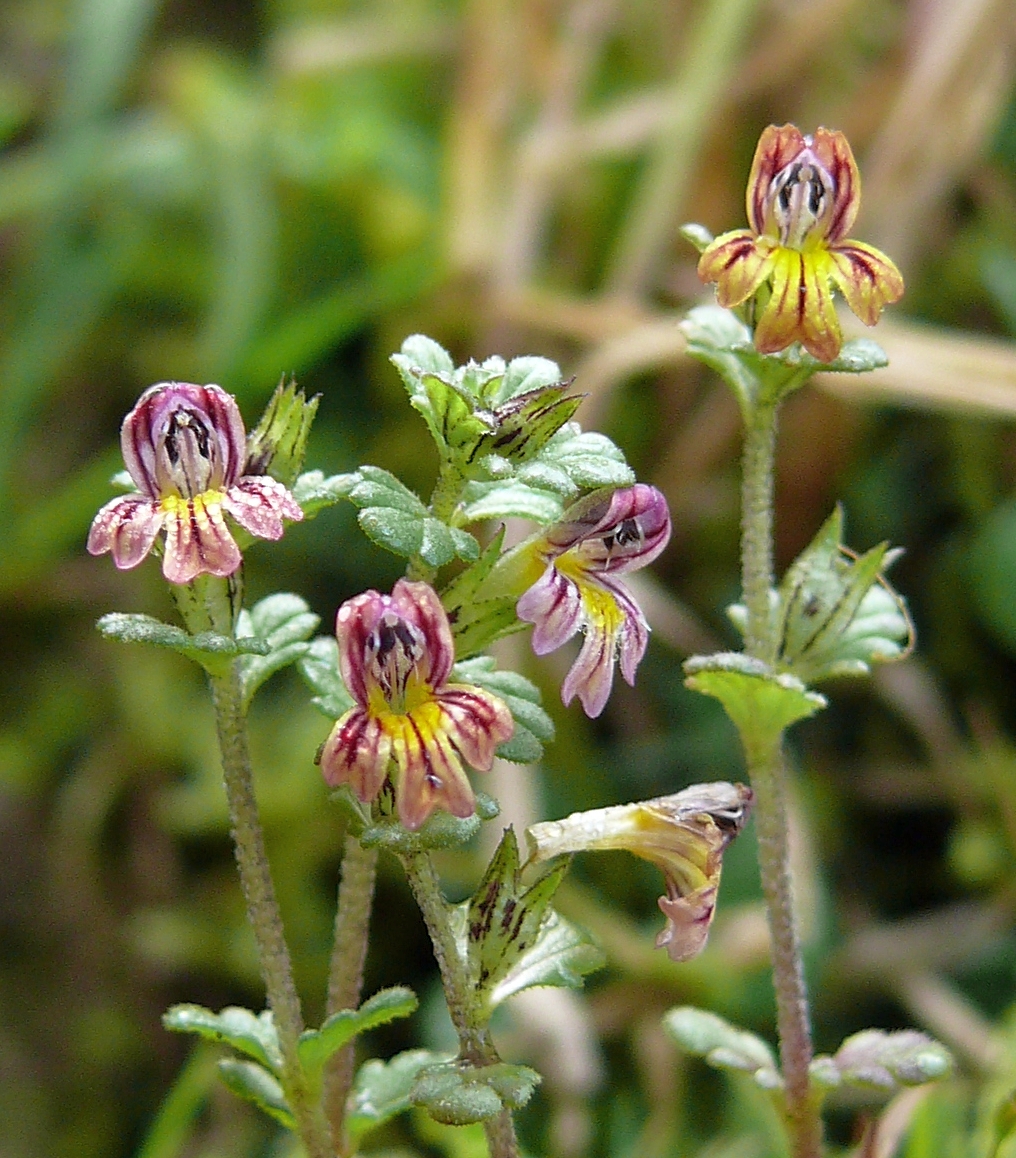Hairy eyebright
(Euphrasia hirtella)

Description
Euphrasia hirtella, commonly known as hairy eyebright, is a flowering plant species belonging to the genus Euphrasia, in the family Orobanchaceae. This herbaceous annual plant is native to Europe and Asia, and is commonly found in meadows, pastures, and waste places. Euphrasia hirtella is known for its medicinal properties and has been used for centuries to treat various ailments. Taxonomy and Naming: Euphrasia hirtella was first described by the renowned Swedish botanist Carl Linnaeus in his book "Species Plantarum" in 1753. The generic name Euphrasia is derived from the Greek word "euphrosyne," which means "gladness" or "mirth." The specific epithet "hirtella" refers to the plant's hairy stem and leaves. Description: Euphrasia hirtella is an annual herb that grows up to 15-30 cm in height. The stem is slender and branched, with fine white hairs, and is often reddish in color. The leaves are opposite, lanceolate in shape, and have serrated margins. The upper leaves are smaller and almost stemless, while the lower leaves are larger and have short stalks. The leaves are hairy, especially on the undersides. The flowers are small, white, and tubular in shape, and are arranged in dense clusters on short, leafless spikes. The fruit is a small capsule that contains numerous seeds. Distribution and Habitat: Euphrasia hirtella is native to Europe and Asia, and can be found in many countries, including the United Kingdom, Germany, France, Russia, China, and Japan. It is typically found growing in meadows, pastures, and waste places, and prefers well-drained soils that are rich in organic matter. It is often found growing alongside other herbaceous plants, such as daisies and clovers. While it is not considered threatened, its natural habitat has been impacted by changes in land use, such as agricultural intensification and urbanization, which has resulted in a decline in its population in some areas. Medicinal Uses: Euphrasia hirtella has been used for centuries as a traditional herbal medicine for treating various eye conditions, such as conjunctivitis, blepharitis, and styes. It is also used to relieve symptoms of hay fever and other allergic conditions, such as rhinitis and sinusitis. The plant contains a number of active compounds, including iridoid glycosides, flavonoids, and tannins, which are thought to be responsible for its medicinal properties. The plant is typically prepared as a tea or infusion, which is then applied directly to the eyes as a compress or used as a nasal spray to relieve congestion. The tea is also taken orally to alleviate other symptoms of allergies, such as sneezing and itching. Euphrasia hirtella is generally considered safe when used as directed, although some individuals may experience mild allergic reactions. Conservation Status: Euphrasia hirtella is not currently listed as a threatened species on the IUCN Red List. However, it is considered rare in some regions, such as the United Kingdom, where it is protected under the Wildlife and Countryside Act 1981. Its natural habitat has been impacted by changes in land use, such as agricultural intensification and urbanization, which has resulted in a decline in its population in some areas. Therefore, efforts are being made to conserve and protect the plant's natural habitat through measures such as habitat restoration and protection. Conclusion: Euphrasia hirtella is a valuable plant species with a long history of use in traditional medicine. Its medicinal properties have been recognized for centuries, and it continues to be used today to treat a range of conditions. While it is not currently considered threatened, its natural habitat has been impacted by human activity, and efforts are needed to ensure its continued survival.
Taxonomic tree:







